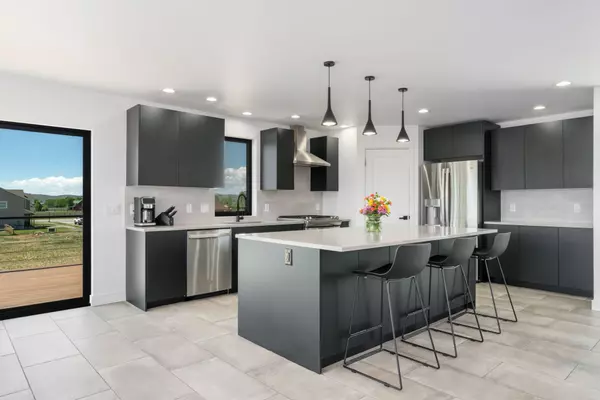Smart Home Technology Updates to Your Home: Where to Start

Introduction to Smart Homes
A smart home isn't just a glimpse into the future; it's a reality that's transforming how we live today. At its core, a smart home is a residence equipped with advanced technology that allows homeowners to manage and monitor various systems and devices remotely or automatically. From lighting and climate control to security and entertainment, smart home technology has redefined convenience and efficiency. The adoption of smart homes has surged in recent years, driven by technological advancements and the desire for more sustainable, secure, and interconnected living environments.
Assessing Your Home’s Current Setup
Before embarking on the journey to transform your home into a smart home, it’s crucial to assess your current setup. Start by evaluating the existing technology in your home. Are there devices that already have smart capabilities? Identify areas where you can seamlessly integrate smart technology. For instance, if your lighting system is outdated, replacing it with smart bulbs or switches might be an excellent first step. Similarly, if you’re using traditional thermostats, upgrading to a smart thermostat could be a game-changer. This assessment will help you pinpoint where smart devices can enhance your home’s functionality.
Choosing the Right Smart Devices
The world of smart home devices is vast, and it can be overwhelming to choose the right ones. Start by understanding the different categories of smart devices available, such as lighting, security, climate control, and entertainment. It’s essential to select devices that align with your specific needs and budget. For example, if security is a priority, smart locks, cameras, and alarm systems should be at the top of your list. On the other hand, if energy efficiency is a goal, focus on smart thermostats and energy-saving lighting options. Always consider the compatibility of devices with your existing ecosystem to ensure smooth integration.
Creating a Centralized Smart Home System
One of the most significant advantages of a smart home is the ability to control multiple devices from a single platform. To achieve this, creating a centralized smart home system is key. This involves selecting a hub or ecosystem that can integrate all your smart devices, allowing for seamless control and automation. Popular ecosystems include Amazon Alexa, Google Home, and Apple HomeKit, each offering unique features and compatibility with various devices. By centralizing your smart home system, you can automate routines, such as turning off all lights at bedtime or adjusting the thermostat when you leave the house, enhancing both convenience and energy efficiency.
Installation and Setup
Once you’ve selected your smart devices and established a centralized system, it’s time for installation and setup. Depending on the complexity of the devices, you may choose to handle the installation yourself or hire a professional. DIY installation is feasible for many smart devices, especially those with straightforward plug-and-play designs. However, for more complex systems, such as smart security or home theater setups, professional installation ensures everything is configured correctly and functions optimally. During the setup process, follow best practices, such as securing your network with strong passwords and enabling two-factor authentication, to protect your smart home from potential cyber threats.
Enhancing Home Security with Smart Technology
One of the most compelling reasons to invest in smart home technology is the enhancement of home security. Smart locks, cameras, and alarms provide unprecedented control and monitoring capabilities. With smart locks, you can lock or unlock your doors remotely, grant access to guests, and receive notifications when someone enters your home. Smart cameras allow you to monitor your property in real-time, with many models offering features like motion detection and night vision. Integrating these devices into your centralized system enables you to manage your home’s security from anywhere, providing peace of mind whether you’re at work or on vacation.
Optimizing Energy Efficiency
In an era where sustainability is more critical than ever, optimizing energy efficiency is a significant benefit of smart home technology. Smart thermostats, such as the Nest or Ecobee, learn your schedule and adjust the temperature to save energy when you’re not home. Smart lighting systems allow you to control lights remotely, set schedules, and even dim or brighten lights automatically based on your preferences. By reducing unnecessary energy consumption, these smart devices not only lower your utility bills but also contribute to a greener, more sustainable lifestyle.
Maintaining and Expanding Your Smart Home
A smart home is not a set-it-and-forget-it endeavor. Regular updates and maintenance are necessary to ensure your devices continue to function optimally. Software updates often include new features and security enhancements, making it essential to keep your devices current. As technology evolves, you may also find new smart devices that could further enhance your home. Expanding your smart home system over time allows you to stay at the forefront of technology while continually improving the comfort, security, and efficiency of your living space.
In conclusion, transitioning to a smart home is a worthwhile investment in your home’s future. By carefully assessing your current setup, selecting the right devices, and creating a centralized system, you can transform your home into a hub of convenience, security, and efficiency. With the right approach, your smart home will not only meet your current needs but also adapt to the future, offering a living environment that is truly connected and responsive.
Categories
- All Blogs (55)
- Buyer Feedback (6)
- Featured Properties (10)
- Grand Teton National Park (1)
- Holiday Decorating (3)
- Home decorating (11)
- Home Maintenance (14)
- Home Selling Tips (22)
- Home Updating Tips (21)
- Land (4)
- Luxury Properties (9)
- Market Updates (14)
- Mountain Living (11)
- Outdoor Recreation in Pinedale (10)
- Pricing Your Home to Sell (14)
- Ranching Lifestyle (4)
- Real Estate Investing (15)
- Relocating to Pinedale (23)
- Smart Homes (2)
- Things to do in Pinedale (9)
- Travel (13)
- Yellowstone National Park (1)
Recent Posts











